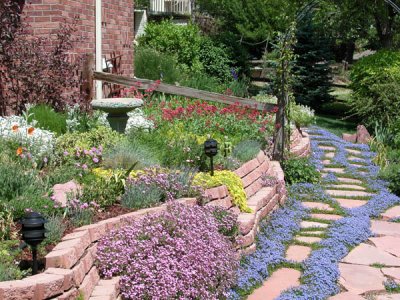Now we're focusing on the front lawn.
It was in such poor shape that we decided to remove all the old stuff with a SOD cutter; I then tilled the soil with a rototiller and installed a sprinkler system. Now we're ready to seed or lay SOD. We stopped by a landscape supply place and they sold us on St Augustine, but it's too late in the season to get SOD. So now we're stuck with two dirt plots in front of our house, which are slowly gathering weeds, and what I believe is bermuda grass, but it may be St. Augustine, because that's what we have in the back.
What should we do? I'm thinking about seeding with cheap seeds, and then laying St. Augustine SOD next spring, but I don't want to go through the trouble of cutting out whatever I seed this fall.
Here's what I can tell you about our land. We live in Orange County in Southern California, so we have pretty good weather year round. Our dirt was very compacted so I tilled it and I have 5 yards of planter mix top soil coming next monday. The other issue I have is the two large trees, one on each side of the driveway. The guy at the landscape store suggested we do a large ring of compost around each tree.
Any suggestions?
Thanks, Ian



